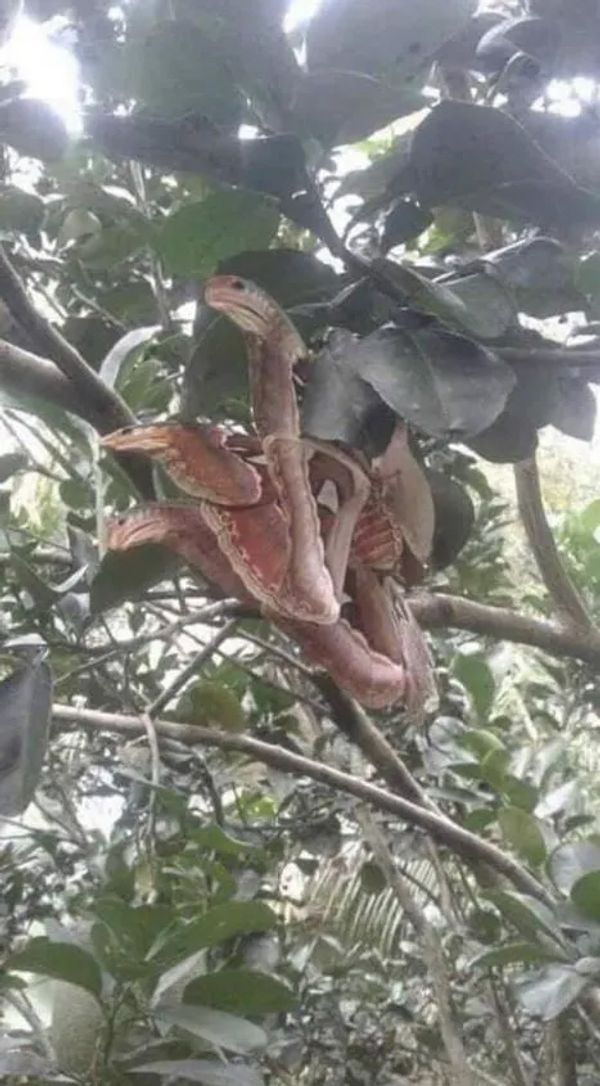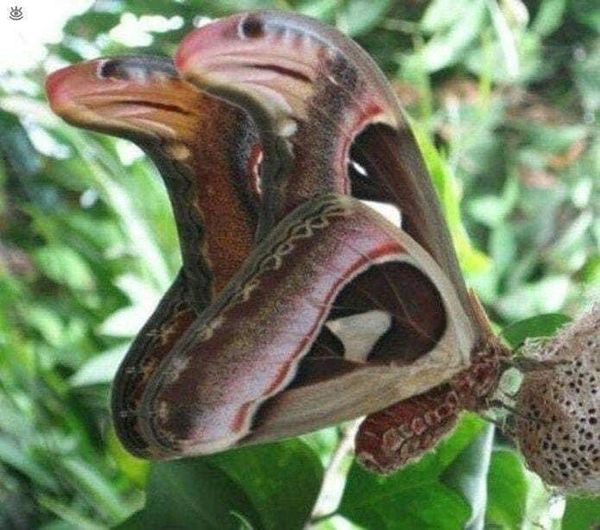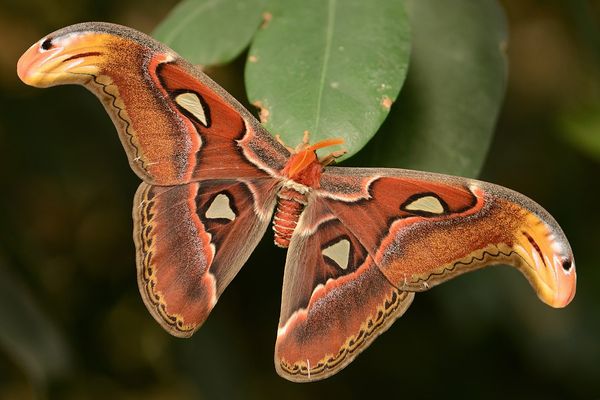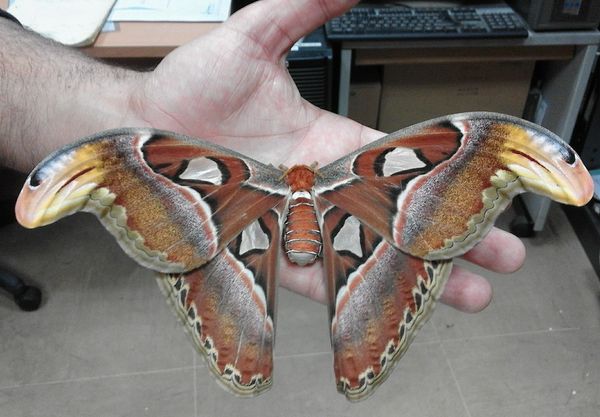Incredible Optical Illusion: The Not-So-Angry “Snakes” in a Tree

Planet Earth is a mesmerizing place with a diverse range of species and captivating wildlife. It never fails to amaze us how organisms interact and adapt to survive and maintain the delicate balance of their ecosystems. Recently, I stumbled upon some fascinating pictures of three “angry snakes” hiding in a tree, and like many others, I was both intrigued and bewildered by these incredible images. However, it may come as a relief to know that these attention-grabbing photos are not what they seem to be!
These pictures went viral on the internet, causing quite a stir. People were quick to assume they were actual snakes lurking in the tree, sending shivers down their spines. But in reality, there’s a surprising twist to the story.

Let’s unveil the illusion. The trio of “snakes” is, in fact, a clever optical illusion created by a combination of wings from two distinct species of moths known as the Atlas moth. Native to the Asian forests, these remarkable moths have evolved an incredible ability to mimic the appearance of a snake. With a massive wingspan of up to 24 cm (9.4 in) and a wing surface area of approximately 160 cm² (≈25 in²), the Atlas moth is one of the largest species of Lepidoptera in existence. Its unique size and shape, with a smaller body in proportion to its wings, create a stunning contrast.

The Atlas moth owes its name to Atlas, the Titan of Greek mythology, as it shares his colossal size. Carl Linnaeus first noted this majestic creature in 1758, and it has fascinated and captivated nature enthusiasts ever since.
When the viral picture was shared on Twitter by Rob Allam, he shed light on the moth’s behavior. During its brief two-week adult stage, the Atlas moth’s primary objective is to lay eggs and protect them until they hatch. It accomplishes this by camouflaging itself as a snake—a strategy that has left many people on social media astonished.
“That disguise is really good,” one user commented, while another marveled, “How’s that top one not an actual snake? This moth would live longer if it didn’t look like I wanted to beat it with a broom.”
Contrary to what one might expect, Atlas moths are not agile fliers. They conserve their energy by resting during the daytime and becoming active at night.

In the face of a threat, the Atlas moth descends to the ground and engages in a writhing motion while simultaneously flapping its wings deliberately to mimic the appearance of a snake’s head. This defense mechanism helps keep potential predators at bay.
To witness the awe-inspiring presence of the Atlas moth firsthand, one would likely need to visit the tropical forests of Asia. However, there have been documented sightings of these magnificent creatures in certain regions of Europe and the United States as well. In fact, in 2012, a giant Atlas moth was spotted on a windowsill in Ramsbottom, Greater Manchester, leaving the family who discovered it convinced they had stumbled upon a bat. Unfortunately, the moth died shortly after being found.

In July 2022, a truly remarkable event occurred when another Atlas moth was spotted and photographed in Bellevue, Washington. This marked the first documented sighting of this species in the United States. Another one was also found in Sweden in the same year. People were in awe of the moth’s enormous size and striking appearance. Sven Spichiger, the managing entomologist for the state Agriculture Department, described it as a “gee-whiz” type of insect that prompts people to take out their phones and capture the moment.

If I ever had the privilege of encountering this extraordinary creature, I would undoubtedly be filled with awe and amazement. My first instinct would be to reach for my camera and capture the moment to preserve it as a truly memorable experience. However, if I noticed it mimicking a snake’s head, I would keep a safe distance.






